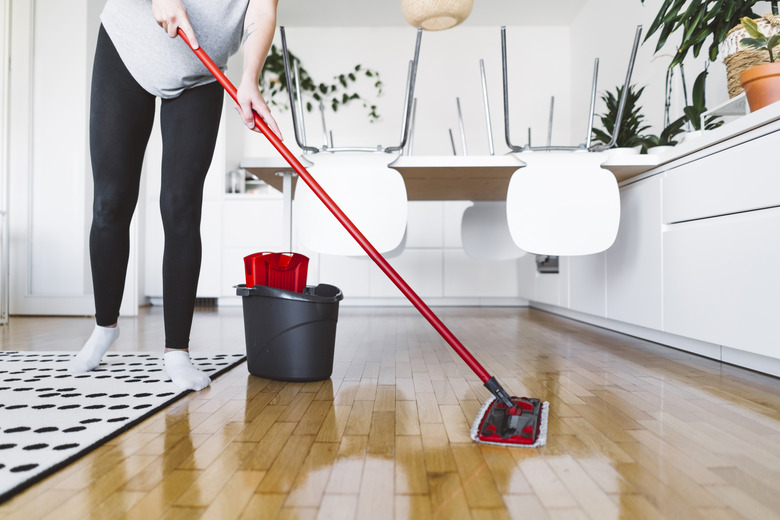How To Clean Wood Floors After Removing Carpets
Someone had a good reason for laying carpet over the hardwood floors, but now it's time to let the wood shine. Floors that have been covered by carpet for a long time will need some TLC before they look their best. Generally, this isn't a very complicated job. Some good old hardwood floor cleaner and a gentle microfiber mop might be all you need.
Removing Carpet Debris
Getting rid of an area rug is as simple as rolling it up and carrying it out. But after removing installed carpet, some adhesive and other debris may remain. Use a cat's paw tool to pry up any tack strips, pull out any nails, or remove staples from wood flooring.
Mineral spirits can be used to remove carpet adhesive from a wood floor. Ventilate the room first because mineral spirits produce fumes. Dampen a microfiber cloth with the solvent and rub at any carpet glue that's dried to your floor. The mineral spirits should soften the adhesive enough that you can then scrape it away with a putty knife. Be careful when disposing of the cleaning cloths because mineral spirits are flammable.
Cleaning Hardwood Floors
Hardwood floors can be warped by water and heat, so steam cleaning and heavy mopping aren't advised. Abrasive and acidic cleaning products aren't recommended either. That means hardwood floors are one place where you probably don't want to clean with white vinegar. (In fact, "heavy-duty wood floor cleaner" is kind of a contradiction in terms, as heavy-duty cleaners, like bleach, can damage hardwood.) Use a hardwood floor cleaner, such as Bona floor cleaner, that you can spray directly on the floor or fill a bucket with warm water and 1/4 cup dish soap.
- Sweep very dirty floors with a bristle broom to collect any large debris in a dustpan.
- Sweep hardwood floors again with a microfiber dust mop to remove any remaining dust or debris.
- Spray a small section of floor with hardwood floor cleaner and mop the floor using a microfiber mophead. If you're using a dish soap solution, dip the microfiber mop into it and squeeze the mophead to get it as dry as possible before mopping.
- Move around the room, mopping one section at a time. If any liquid remains on the floor after you're finished mopping a section of floor, dry it with the microfiber dust mop.
Protecting Wood Floors
It's optional, but applying a coating of store-bought or DIY floor polish to a clean wood floor can make it shine and disguise dings and imperfections. Whether or not it's safe to polish your hardwood floor after cleaning depends on whether the floor has been treated with a surface finish. If you can use a knife's blade to scrape up a little clear coating from an inconspicuous patch of floor, it's a surface finish and can be polished. A penetrating finish can be smudged with a knife but not scraped up and can be waxed but not polished.
Apply a new coat of finish to wood floors every three to five years. Sand and refinish hardwood floors every few decades. If your wood floors have been neglected for years, it might be worth the investment to have them sanded and refinished now that they're on display again.
